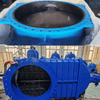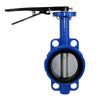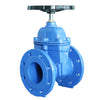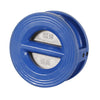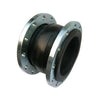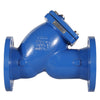Do you know the 8 common API valve standards?
In the industrial sector, the American Petroleum Institute (API) has established numerous standards for valves to ensure consistency and quality control in valve design, manufacturing, and application. This article briefly discusses several common API valve standards, including API 600, API 602, API 603, API 623, and more, explaining their applications for different types of valves.
The Role of API Standards in Valves
Using standards in engineering datasheets is critical. API standards ensure consistency in requirements between valve manufacturers and users, such as material selection, body thickness, and stem diameter. For example, when sourcing raw materials from different China steel suppliers, unified API standards help guarantee that the steel meets the same quality and performance requirements regardless of the supplier. Without unified standards, suppliers might use varying specifications, resulting in differences in quality and performance. Therefore, API standards help engineers and manufacturers maintain consistency in valve design and usage.
Comparison of Gate Valve Standards API 600, API 603, and API 602
API 600: API 600 is designed for heavy-duty applications, with a thicker valve body suitable for pressure ratings from 150 to 2500 psi. These valves, built with higher thickness than ASME B16.34 (Valve Flange Rating Standard), are intended for demanding industrial environments.
API 603: API 603 offers a lightweight valve standard with a body thickness smaller than API 600, comparable to ASME B16.34. It’s primarily used in lower-pressure environments and provides higher corrosion resistance, making it popular in many industrial and commercial facilities.
API 602: Situated between API 600 and API 603, API 602 applies to small-diameter valves, generally between 1/2 inch and 2 inches, with an 800 psi pressure rating. Its compact design is ideal for small valve applications, often found in narrow piping systems.
API 623: Standards specifically for globe valves and control valves
Due to the special needs of globe valves in controlling flow, API 623 came into being. API 623 focuses on the thickness, stem diameter and pressure resistance of globe valves to meet the requirements for higher thrust. Especially in high-pressure environments, the API 623 globe valve standard ensures that the valve can withstand higher stresses, making it more stable in flow control applications.
API 623 also draws on many advantages of API 600 and adds a material classification table for control valves to help engineers choose the right material according to application requirements.
Two Commonly Used Valve Standards: ASME B16.34 and API 600
ASME B16.34 covers pressure-temperature ratings, dimensions, and testing for valves.
API 600 focuses on steel gate valves for petroleum and natural gas industries, specifying design, materials, and testing.
Although they have overlapping areas, ASME B16.34 is broader for all valve types, while API 600 is more specialized.
For engineers and procurement managers, knowing when to use each is key for compliance and performance.
API 609: Class A and Class B Butterfly Valves
API 609 is the main standard for butterfly valves. divided into Class A and Class B based on application pressure and environment:
Class A butterfly valves: Suitable for low pressure, non-critical applications and concentric design. These valves use the manufacturer's cold rated pressure and are used in simple applications at a lower cost.
Class B butterfly valves: Suitable for harsh applications with high corrosion and high pressure, and meet ASME 16.5 and 16.47 flange rating standards.
Class B butterfly valves have double and triple offset designs, which can provide excellent sealing performance and are more stable and reliable in high performance and harsh environments, but the cost is higher.

API 608: Floating and Trunnion Ball Valve Designs
API 608 is specifically for ball valves, with two primary designs:
Floating Ball Valve: A floating ball rests on the valve seat, typically used in medium to low-pressure applications. The fluid flow moves the ball, and the seat holds the ball in place within the valve body. This simple design is cost-effective.
Trunnion Ball Valve: The ball is fixed by specific mounts, ideal for high-pressure applications. Since the ball doesn’t shift under pressure, this design offers better stability and durability in high-pressure conditions.
API 599 and API 594: Standards for Plug and Check Valves
API 599 and API 594 set the primary standards for plug and check valves, respectively.
API 599 covers plug valve designs for a wide range of applications, with valve sizes from 1/2 inch to 36 inches. API 594 is the main standard for check valves, ensuring they provide one-way flow in systems and prevent backflow.
FAQ
1. What are ASME B16.34 and API 600 valve standards?
ASME B16.34 is a comprehensive standard covering pressure–temperature ratings, dimensions, materials, and testing for valves in general industrial use.
API 600 is a standard specifically for steel gate valves used in petroleum and natural gas industries, focusing on design, materials, and quality requirements.
2. Why are ASME B16.34 and API 600 considered the two most commonly used valve standards?
These two standards are widely recognized across oil & gas, water treatment, and industrial engineering projects.
ASME B16.34 provides the baseline requirements for most valves, while API 600 is a specialized guideline for gate valves in demanding applications.
3. What is the main difference between ASME B16.34 and API 600?
The key difference lies in scope and application:
-
ASME B16.34 applies to all valve types, covering dimensions, materials, and pressure ratings.
-
API 600 focuses only on steel gate valves and sets stricter requirements for wall thickness, sealing, and durability.
4. Which standard should I use for my project – ASME B16.34 or API 600?
-
If your project involves general industrial valves, follow ASME B16.34.
-
If you are specifying steel gate valves for oil, gas, or high-pressure applications, follow API 600.
Many engineering specifications require compliance with both standards to ensure safety and reliability.
5. Can a valve meet both ASME B16.34 and API 600 standards?
Yes. Many gate valves are designed to comply with both standards.
They follow ASME B16.34 for dimensional and pressure requirements, and API 600 for gate valve–specific design and testing.
6. Are ASME B16.34 and API 600 required for water or wastewater projects?
In water and wastewater treatment, these standards may be referenced for material quality and testing requirements, especially in projects with high-pressure or corrosive service conditions.
However, local specifications and project requirements should always be reviewed.
Summary
In the valve sector, different API standards are applied to various valve types and applications. Below is a summary of each API standard and its applications:
API 600: Heavy-duty gate valve standard for high-pressure environments.
API 603: Lightweight gate valve standard for low to medium pressure with corrosion resistance.
API 602: Small-diameter gate valve standard for narrow piping systems.
API 623: Control valve standard, meeting high-thrust demands for globe valve applications.
API 609: Butterfly valve standard, with Class A (low-pressure, non-critical) and Class B (high-pressure, corrosive) classifications.
API 608: Ball valve standard, encompassing floating and trunnion ball designs.
API 599 and API 594: Primary standards for plug and check valves, respectively.
As industry demands and technology evolve, API standards will continue to be updated, ensuring valve reliability and safety across various environments.
Union Valve, a specialized butterfly valve manufacturer in China, provides custom designs to meet precise specifications. Their products comply with a range of international standards, including GB, BS, GOST, DIN, API, and ANSI. For more information, please contact us.


